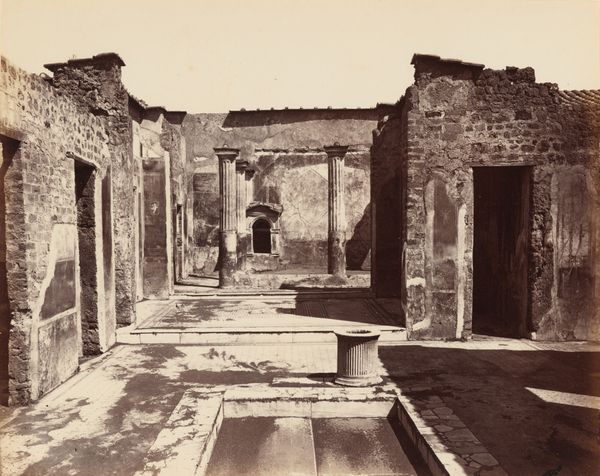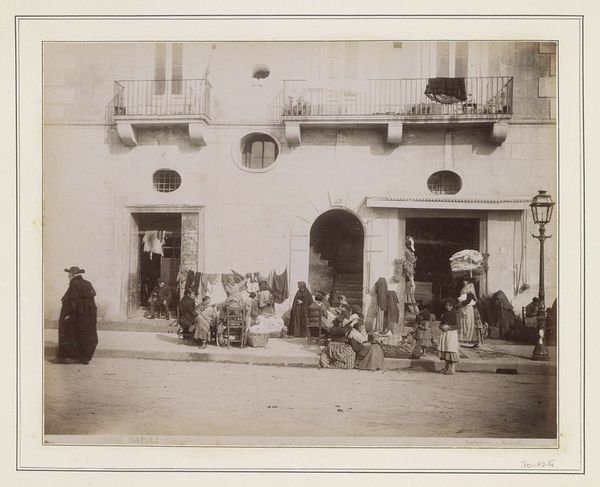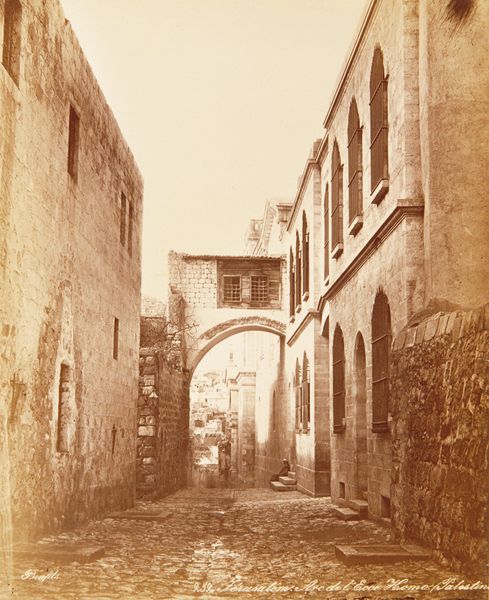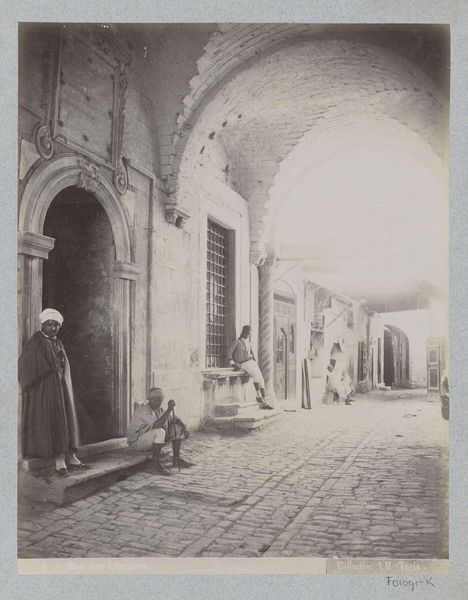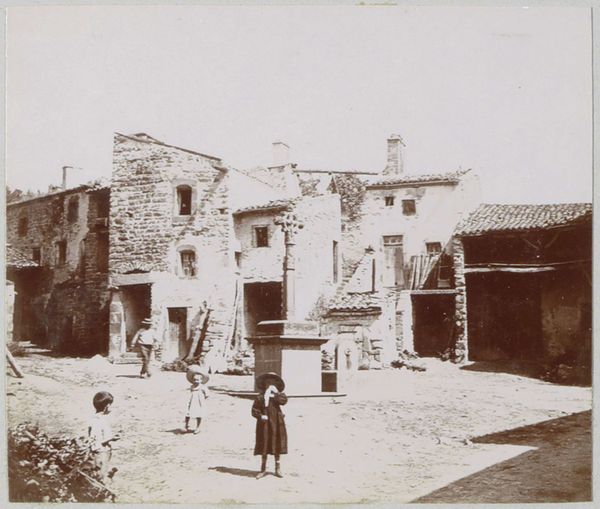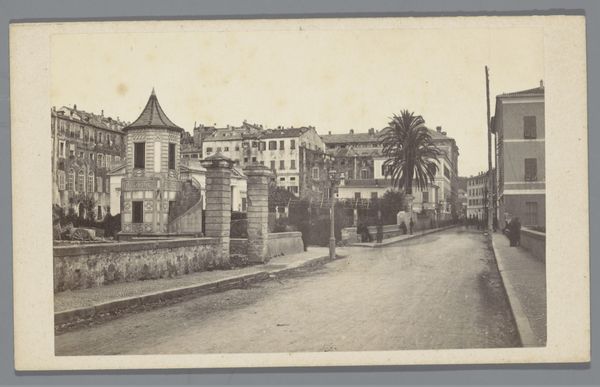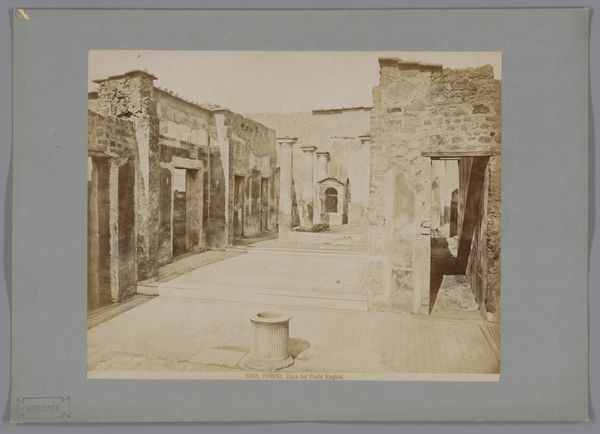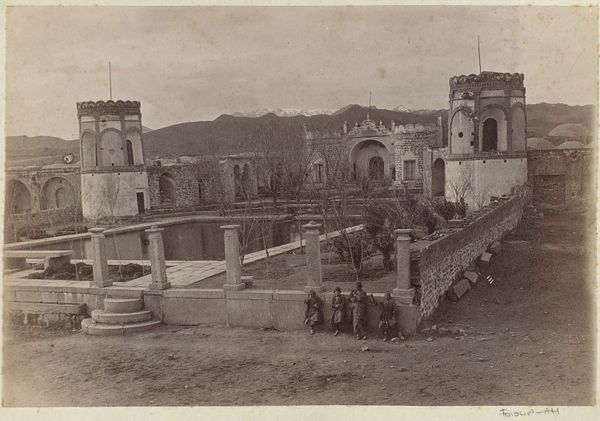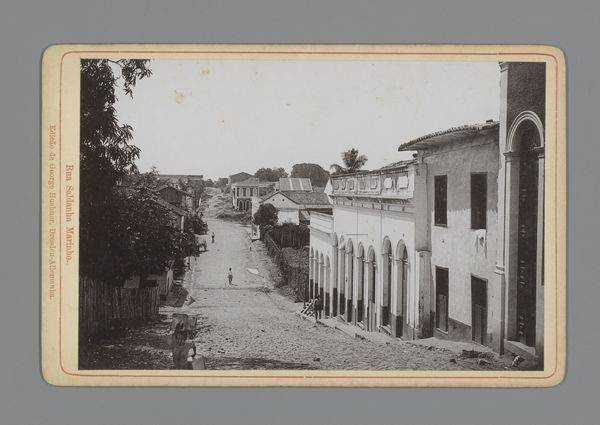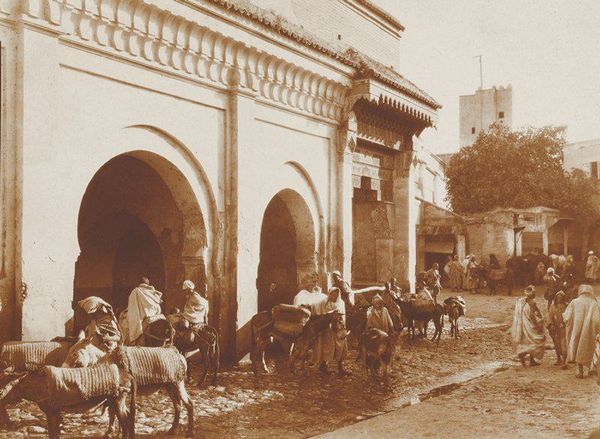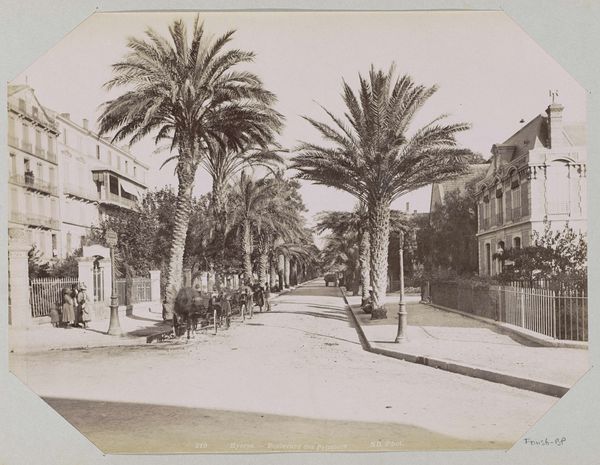
photography, gelatin-silver-print
#
human-figures
#
landscape
#
street-photography
#
photography
#
historical photography
#
orientalism
#
gelatin-silver-print
#
street
#
building
Dimensions: Image: 8 5/16 × 10 5/8 in. (21.1 × 27 cm)
Copyright: Public Domain
Curator: The image we're looking at is titled "A Street in Macao," a gelatin silver print from 1869 by John Thomson. Editor: There’s an almost dreamlike quality to the sepia tones. The architecture feels both familiar and distant, and the human figures add to this sensation of being transported to another place. Curator: Thomson's choice of the gelatin silver process is interesting. The sharpness it provides really details the architectural textures and the wear of everyday life visible on these structures. But also considering how challenging photography was at the time, that it was mostly available for a Western audience in the region adds to the narrative of colonial exploration. Editor: Exactly! The work needs to be read against the backdrop of Western Orientalism. This image presents Macao through a specific lens, doesn’t it? The careful framing, the positioning of people – it constructs a particular narrative. Curator: Well, beyond the Western gaze, the materiality speaks volumes about labor. Think about the labor of these anonymous people populating Thomson's scene: construction workers, water carriers... What materials were locally sourced? How did that affect production models in Macao? Editor: That also plays into how class, gender, and race are subtly at play here. The subjects' roles in this staged tableau speaks volumes about a community where opportunities would have been dictated by race, gender, and class. Curator: I suppose that you're right: Thompson, inadvertently or not, provides information about those aspects of daily life. Still, without overlooking such observations, the image is just beautiful when considered in the history of 19th century photography: just the craft and materials of gelatin printing are fascinating when we consider photography evolving so quickly at the time. Editor: Ultimately, this piece, though framed through the lens of its time, does allow us to reflect on intersectionality, the history of cultural representation and the labor it depicts. Curator: Agreed. Seeing "A Street in Macao," helps understand the materials used to represent other cultures during that period, as well as, their effect on perception.
Comments
No comments
Be the first to comment and join the conversation on the ultimate creative platform.
